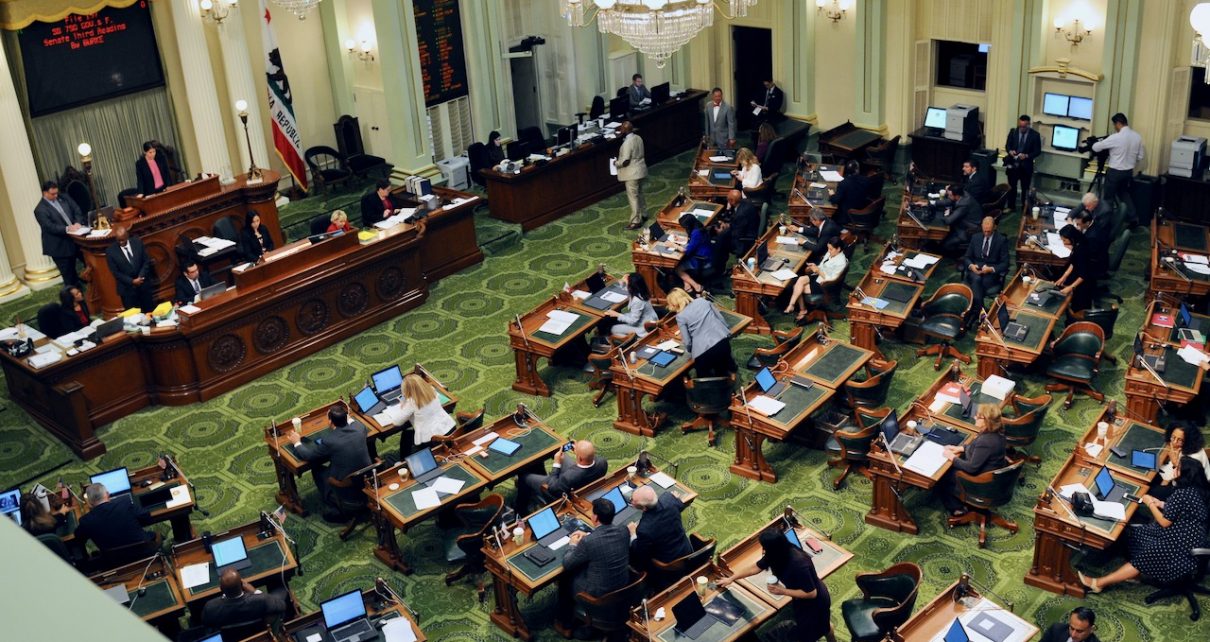
California State Assembly Chamber. (Photo: Kevin Sanders for California Globe)
Can We Call Them Placeholder Bills Instead?
These intent statements can be general in nature or quite narrow in their descriptions
By Chris Micheli, February 8, 2024 8:20 am
Quite often bills introduced in the California Legislature without substantive language in them are called “spot bills.” However, that is not always the case even though both spot and intent bills act as placeholders with substantive amendments to be added at a later date. On occasion, there are also placeholder bills that merely set forth legislative findings and declarations.
Spot Bills make technical changes to an existing statute. They are deemed to be nonsubstantive changes to the law. The Office of Legislative Counsel has traditionally included in its Digest a statement that reads: “This bill would make a technical, nonsubstantive change to the law.” Other Legislative Counsel deputies simply describe a spot bill as one that “would make a nonsubstantive change to the law.”
Intent Bills provide a statement of intent by the Legislature. The Office of Legislative Counsel includes in its Digest a statement that reads: “This bill would state the intent of the Legislature to ___.” These intent statements can be general in nature or quite narrow in their descriptions.
Some intent bills allow broad leeway to the bill’s author about what might later be amended into the bill. For example, a reader might see a bill that provides, “It is the intent of the Legislature to enact a bill relating to transportation.”
In other instances, a narrow statement will clearly provide what the bill will ultimately do when substantive amendments are added to the bill. For example, a reader might see a bill that provides, “It is the intent of the Legislature to conform state tax law to federal tax law modifications made to the research and development tax credit enacted by the 2019 federal tax act.”
How are these types of bills handled once they are introduced in the Assembly or Senate? Spot and intent bills are not referred to a policy committee in either house (e.g., see Assembly Rule 51.5). Note that Assembly Budget Committee intent bills and Senate Budget and Fiscal Review Committee intent bills do get referred to their respective committees and usually passed over to the other house.
Okay, so what is my point? There are actually three types of “placeholder”-type bills introduced in the California Legislature. Because there are spot bills, intent bills, and findings and declarations bills, all of which lack substantive statutory language, I think they all should be referred to as “placeholder bills,” rather than the typical term of lumping them all together as simply spot bills.
- Exemptions from Tax Withholding in California - July 23, 2024
- General Provisions of California’s Evidence Code - July 22, 2024
- Judicial Notice Under the California Evidence Code - July 21, 2024




